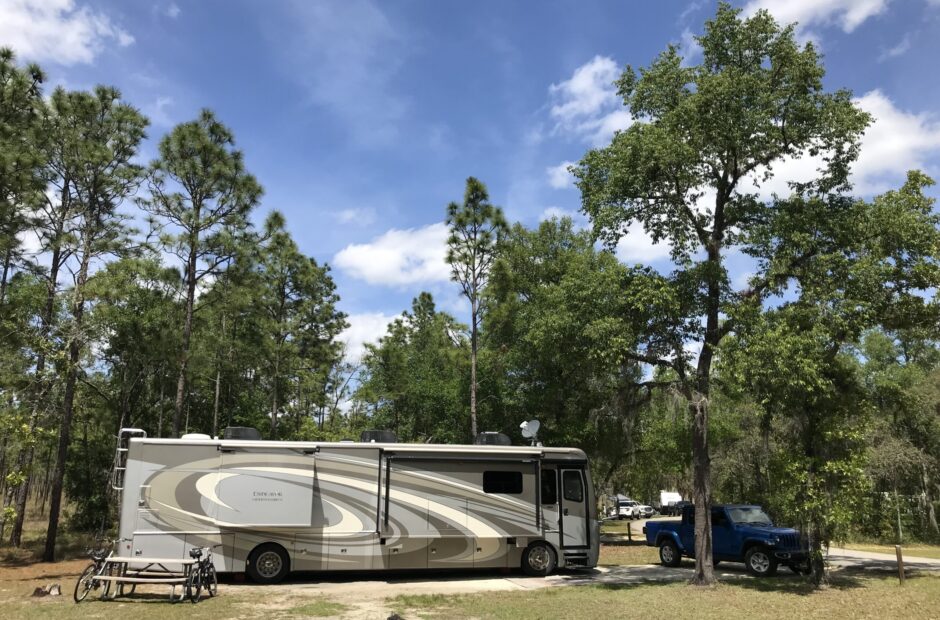Southern Hills RV Park, Hermosa, South Dakota
When Esau heard his father’s words, he burst out with a loud and bitter cry and said to his father, “Bless me – me too, my father!” But he said, “Your brother came deceitfully and took your blessing.” Esau said, “Isn’t he rightly named Jacob (means he grasps the heel – figuratively, he deceives)? He has deceived me these two times: He took my birthright, and now he’s taken my blessing!” Then he asked, “Haven’t you reserved any blessing for me?” Isaac answered Esau, “I have made him lord over you and have made all his relatives his servants, and I have sustained him with grain and new wine. So what can I possibly do for you, my son?” Esau said to his father, “Do you have only one blessing, my father? Bless me too, my father!” then Esau wept aloud. ~ Genesis 27:34-38 How tragic! You have to feel for the two of them, regardless of the fact that Esau was a source of grief for his parents, and doesn’t acknowledge the fact that he willingly gave up his birthright (and consequently the blessing as they go hand-in-hand) – he wasn’t coerced as he says. And I’m certain Rebekah and Jacob were just outside listening to the exchange. How did they feel? Self-righteous? Remorseful? Do they realize – or care – that they’ve ripped their family apart? How do we feel when we purposely cause others pain by our words or actions?

I have no idea what we did on Saturday, but on Sunday, we returned to the same church we visited last week. It was a wonderful time of worship and learning. Once more week, before we leave the area and go in search of another family group to worship with.
Since it was close to the church, we stopped at Dinosaur Park. Here’s information straight from the Library of Congress:
Significance: Dinosaur Park was built as a tourist attraction and city park by the Works Progress Administration and the City of Rapid City in 1936. The hilltop park features five concrete dinosaurs representing the prehistoric history of the Black Hills region. Dinosaur Park was built at the top of a hill overlooking Rapid City, South Dakota with Works Progress Administration Project funding. The park included stone stairs and five concrete dinosaurs. The dinosaurs included a Tyrannosaurus rex, Stegosaurus, Triceratops, Apatosaurus (formerly Brontosaurus), and Anatotian (formerly Trachodon). Originally the dinosaurs were painted gray and the site had less hardscaping. Currently the sculptures have a green and white color scheme that dates to the 1950s. Two additional prehistoric creature sculptures added later – a Dimetrodon and a Protoceratops – are located near the gift shop and parking lot on the other side of Skyline Drive. Skyline Drive was built with New Deal-funding as a companion project to Dinosaur Park. Dinosaur Park is an unusual New Deal project intended to capitalize on the tourist traffic going through Rapid City to Mount Rushmore National Monument. The work began in February 1936 as Works Progress Administration Project #960. The official dedication was May 22, 1936 with construction continuing until 1938. The dinosaurs were designed by lawyer and sculptor Emmit Sullivan (b. 1887- d. 1970) and constructed with a two-inch metal pipe frame covered with wire mesh and a concrete skin. Sullivan later did sculptures for Dinosaur World in Beaver, Arkansas and the Christ of the Ozarks statue in Eureka Springs, Arkansas. The Rapid City Chamber of Commerce was involved, as was Dr. C. C. O’Hara, paleontologist and retired President of the nearby South Dakota School of Mines. Dr. Barnum Brown, curator of the American Museum of Natural History in New York City, served as a scientific consultant. The specimens were chosen to represent the dinosaur fossils found in the Western United States. Their scale is generally correct, but their concrete forms reflect an outdated view of dinosaur anatomy. The current gift shop and parking lot were added c. 1968 and the site became an official city park that year. Dinosaur Park has been changed over the years with additional asphalt paths, stone retaining walls, terraces, and railings, but still serves as a unique tourist attraction.
Oh. And you’re supposed to be able to see for 100 miles. I’m not sure what decade that was, but it’s probably not true in today’s pollution-driven world, and definitely not today as smoke from the wildfires further west continue to cloud the horizon.
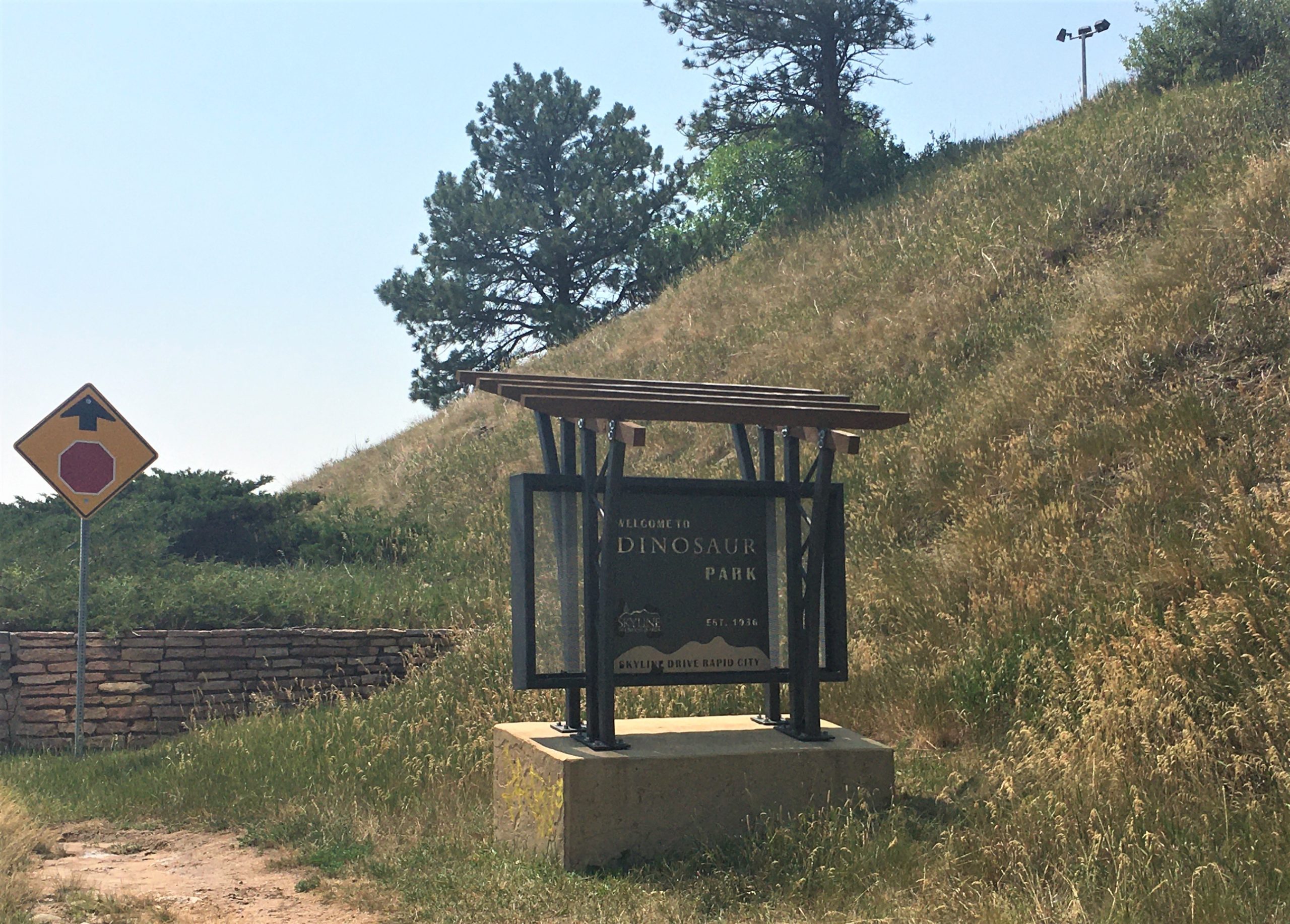
(say it really dramatically, and you’ll get the effect I was going for)
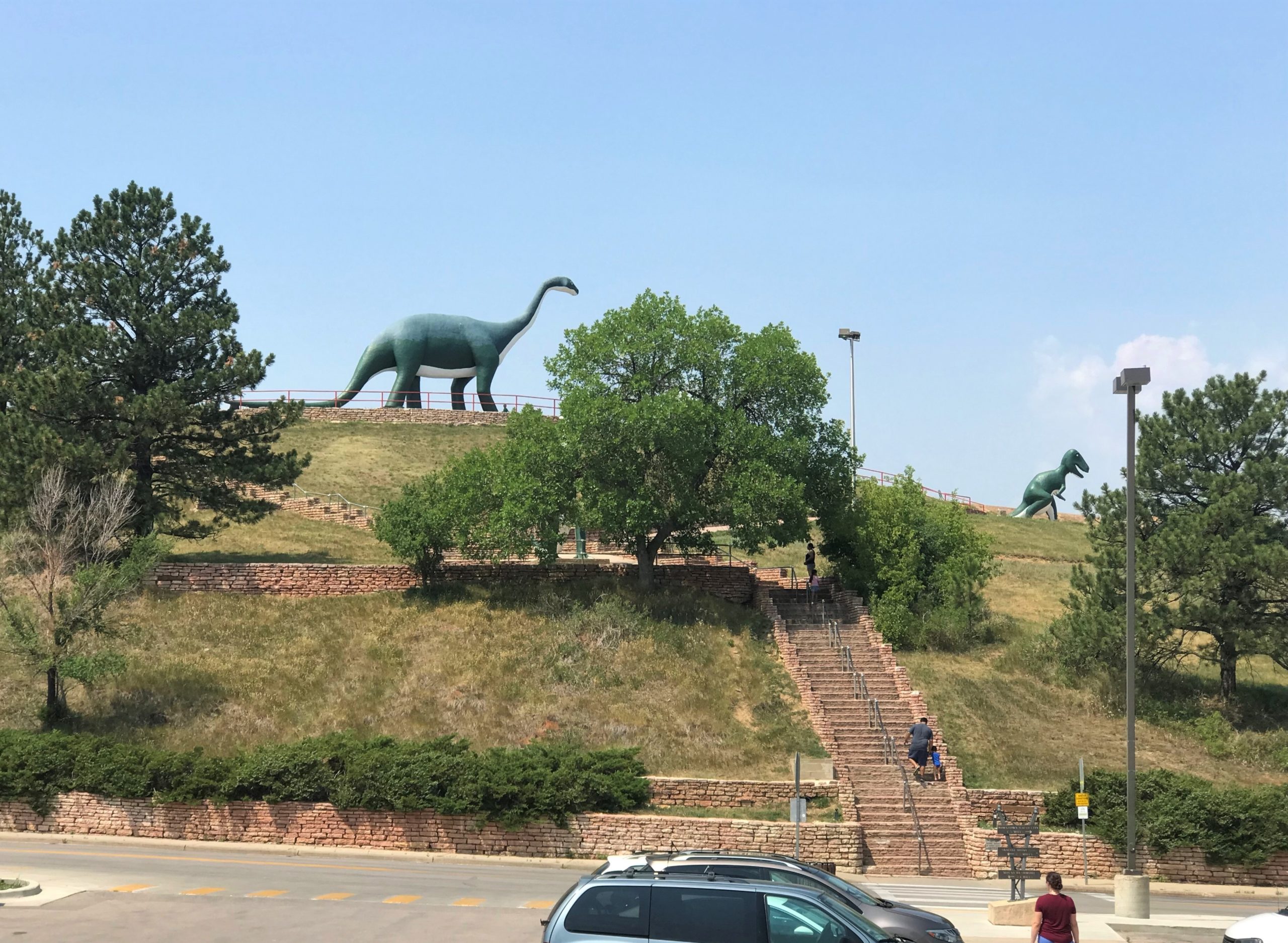
It’s about a hundred degrees in the shade!
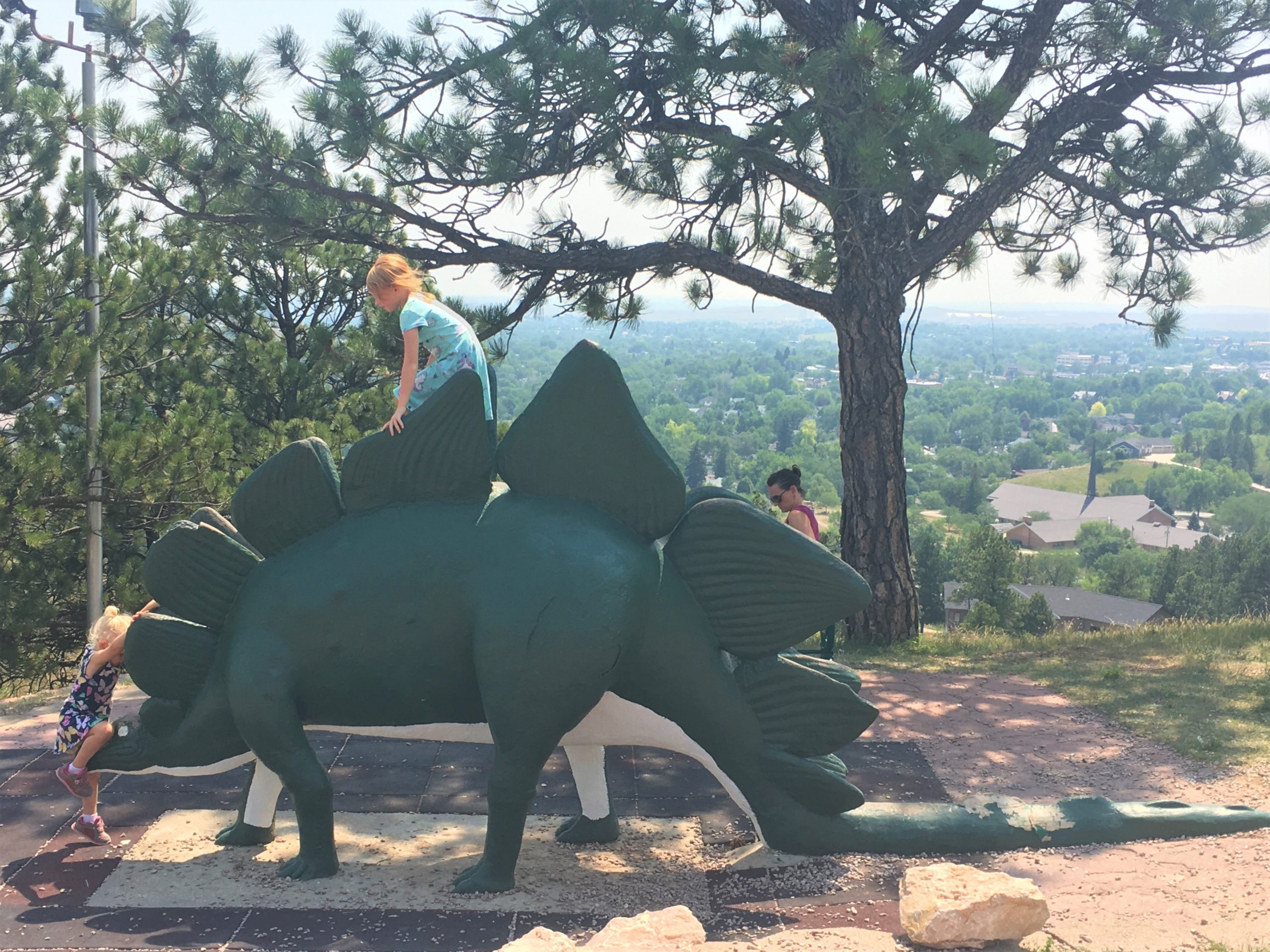
Look at the haze in the background. That’s all smoke!

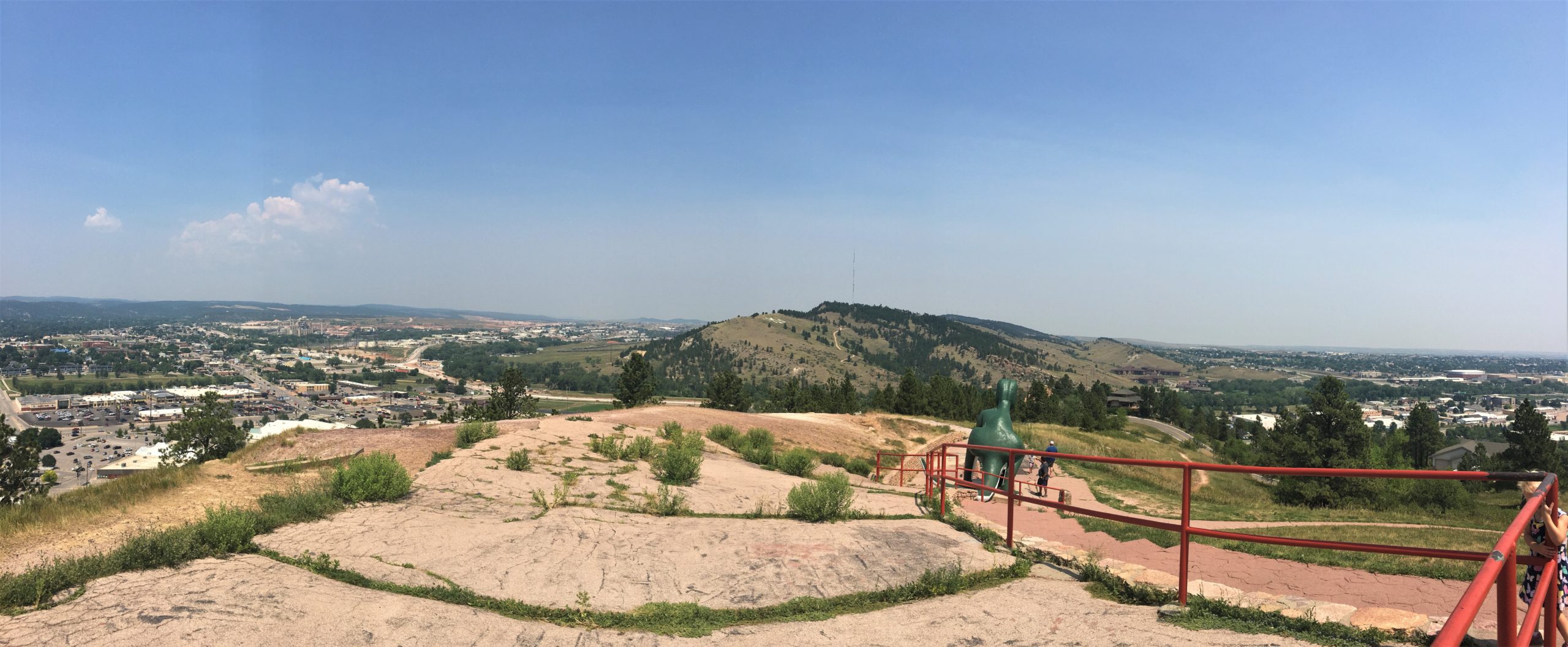
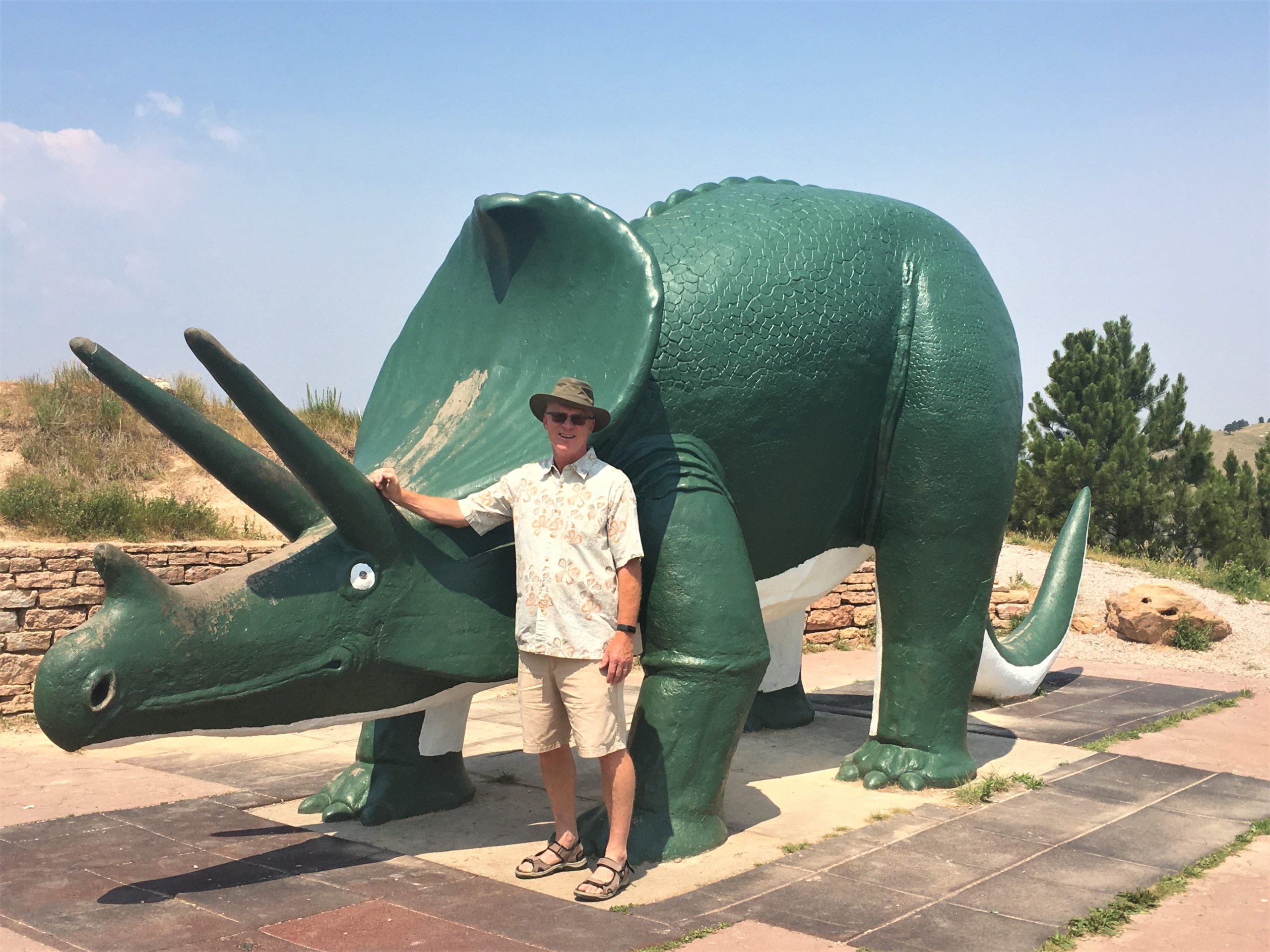
Guess the Flintstones weren’t too far off, where they? : )
Blaine’s in his church clothes.
He felt weird wearing shorts and sandals,
but the congregation dresses down and wears all kinds of things.
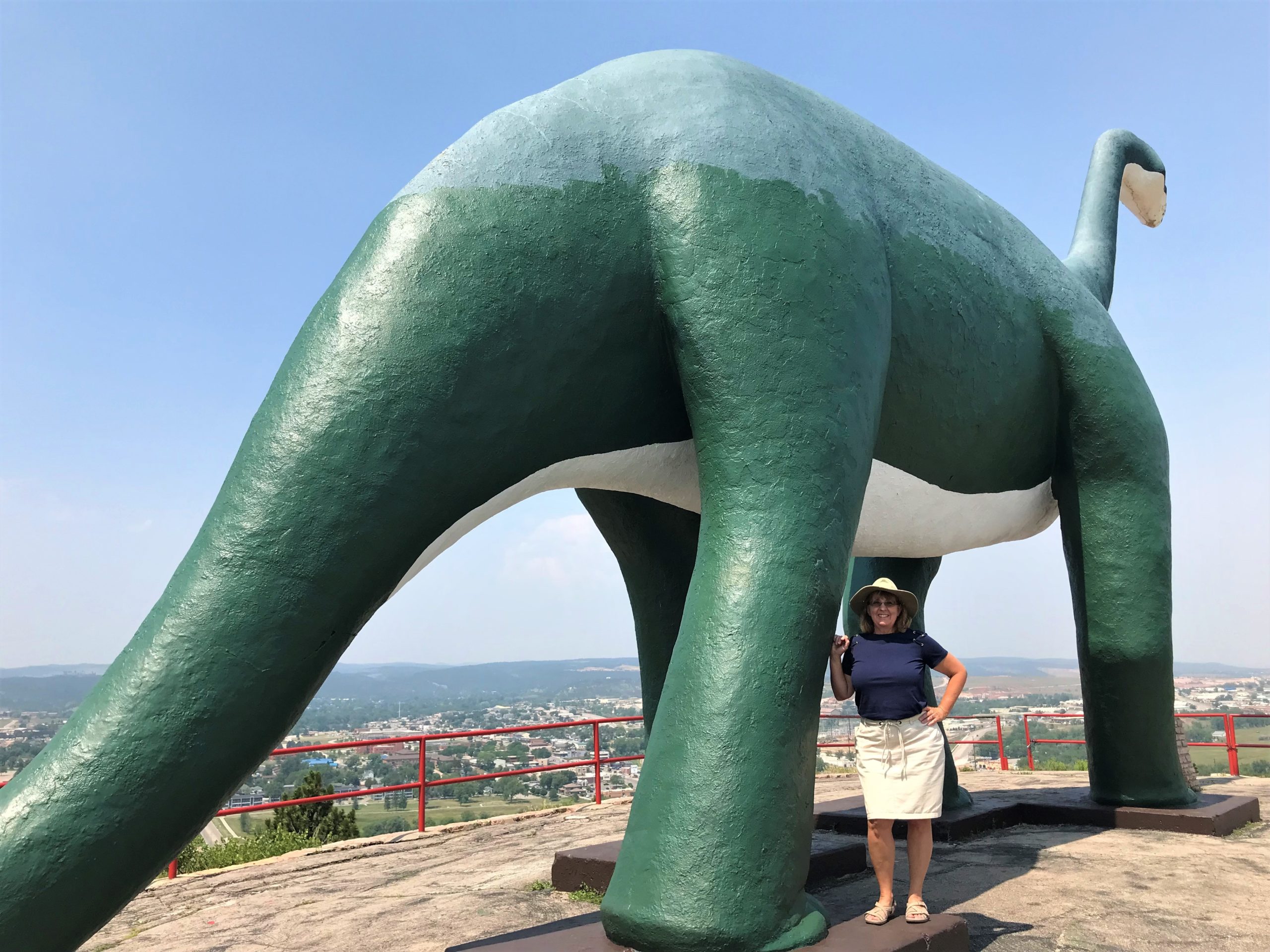
And these are my church clothes (minus the hat of course).
I was gonna change, but it was too hot to do anything else,
so I just left them on till we got home.
And that’s it. Well, other than we stopped at Culver’s for lunch. In case I haven’t mentioned it before, Culver’s has taken over first place from Wendy’s as far as fast-food burgers go. You just can’t imagine how good they are until you try it! And we tried fried Wisconsin cheese curds today too. Also very yummy! As is their homemade root beer. And of course, you can’t go to Culver’s and not get their homemade ice cream! Today’s flavor was chocolate covered strawberry. Oh my! Was it tasty!
And that’s all I have for today’s excursions.
Since there’s not much to share today, this seems like a good time to impart some buffalo facts. That way, you can skip the entire post if you want. 😊

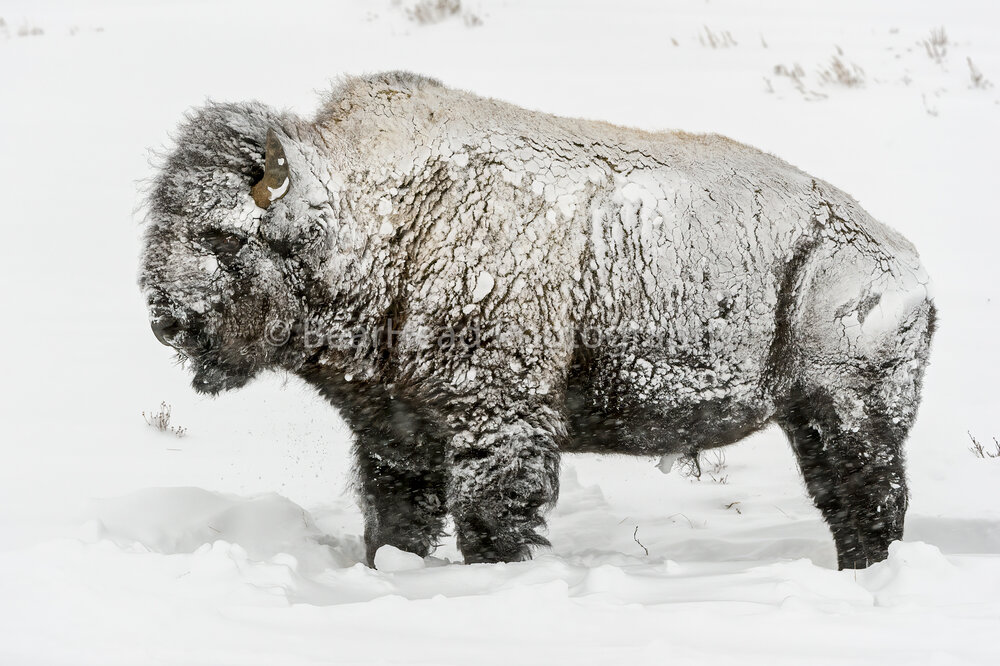

The information came from various sources, but mostly different web addresses within the National Park Service.
- The American bison was named the national mammal of the United States on May 9, 2016. This majestic animal joins the ranks of the Bald Eagle as the official symbol of our country — and much like the eagle, it’s one of the greatest conservation success stories of all time.
- Bison are the largest mammal in North America. Male bison (called bulls) weigh up to 2,000 pounds and stand 6 feet tall, while females (called cows) weigh up to 1,000 pounds and reach a height of 4-5 feet. Bison calves weigh 30-70 pounds at birth. The babies are also referred to as “red dogs” because of their color.
- Yellowstone National Park is the only place in the U.S. where bison have continuously lived since prehistoric times. What makes Yellowstone’s bison so special is that they’re the pure descendants (free of cattle genes) of early bison that roamed our country’s grasslands.
- How many bison used to live in what is now the United States? From 30 to 60 million bison may have roamed North America before the mid-1800s. They ranged across the continent, but the majority lived on the Great Plains.
- Bison are not listed as a threatened or endangered species. Approximately 30,000 bison live in public and private herds in North America; they are managed for conservation goals. Approximately 400,000 bison are raised as livestock.
- So why are bison protected if they aren’t endangered? Bison in the United States were hunted almost to extinction. After tribes acquired horses in the 1600s, they could travel farther to find bison and hunt the animals more easily. However, they generally did not hunt to excess. The U.S. Army held a campaign in the late 1800s to eliminate bison as a way to control tribes that depended on bison. Yellowstone was the only place in the contiguous 48 states where wild, free-ranging bison persisted into the 20th century. Ironically, the U.S. Army, which administered Yellowstone at that time, protected these few dozen bison from poaching as best they could. The Lacey Act was passed in 1894 to allow stronger punishment for poachers. Even so, Yellowstone’s bison were reduced by poaching from as many as one thousand in 1872, to approximately two dozen animals in 1902. From that small herd has grown the two large herds now occupying Yellowstone National Park (about 5,500 total). Many people consider the protection and recovery of bison in Yellowstone to be one of the great triumphs of American conservation. There are approximately 1,500 buffalo in Custer State Park.
- Buffalo have a gestation period of 9 to 9½ months. Calves can keep up with the herd 2 to 3 hours after birth and they are well protected by their mothers and other members of the herd.
- A bison’s massive hump is comprised of muscles supported by long vertebrae; this allows a bison to use its head as a snowplow in winter, swinging side to side to sweep aside the snow. God thinks of everything!
- Wallowing (rolling around in the dirt) deters biting flies and removes tufts of molted fur. Bison also leave their scent in the wallow. And during the rut, bull bison wallow to display their strength and vigor.
- On average, 9 out of 100 adult bison will die during the winter. Generally, these animals entered winter in poor condition due to age, disease, or injuries. Young bison entering their first winter face a higher risk of dying: 20 to 40 of every 100 first-year animals may die from accidents, winter exposure, or predation.
- The American bison is agile and quick. It can also pivot quickly—an advantage when fighting predators that aim for hindquarters. They can jump high fences (how high is high??) and are strong swimmers. They have a charge speed in the range of around 35 mph, and since they weigh in at roughly 1400 – 2000 pounds, it calculates to over 13,000 Newtons of force. Keep this in mind – – 3,000 Newtons of force per square centimeter can break a bone. At least that’s what I read somewhere. Basically, you don’t want to be in the way of a charging buffalo. But then, you already knew that didn’t you?
- Established in 1992, the Inter Tribal Buffalo Council works with the National Park Service to transfer bison from national park lands to tribal lands.
- From hunter to conservationist, Teddy Roosevelt helped save bison from extinction. In 1883, Teddy Roosevelt traveled to the Dakota Territory to hunt bison. After spending a few years in the west, Roosevelt returned to New York with a new outlook on life. He paved the way for the conservation movement, and in 1905, formed the American Bison Society with William Hornaday to save the disappearing bison. Today bison live in all 50 states, including Native American lands, wildlife refuges, national parks and private lands. Maybe we should be snuggling Teddy Buffalo instead of Teddy Bears?? 😊
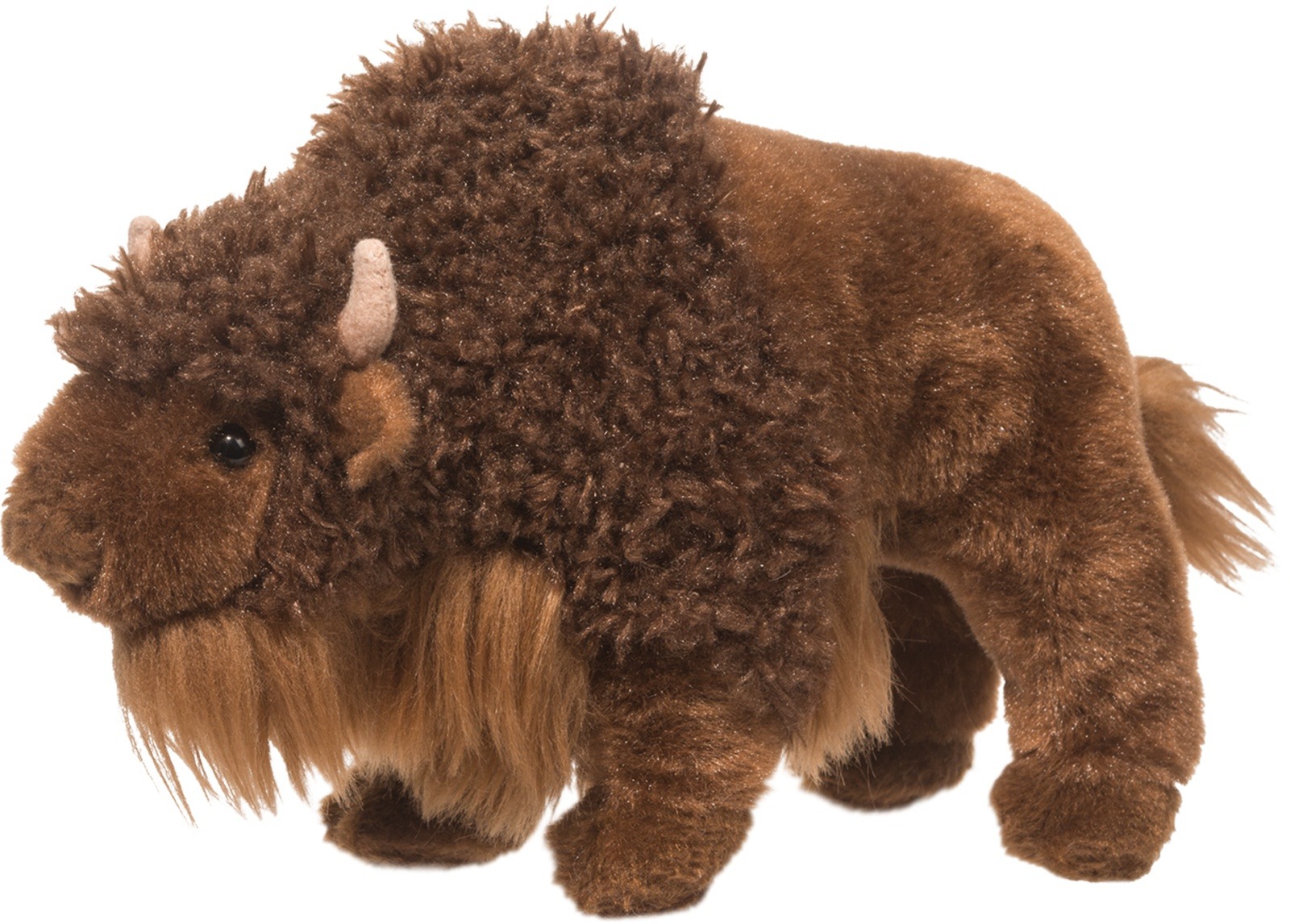
I think it’s the horns . . .
